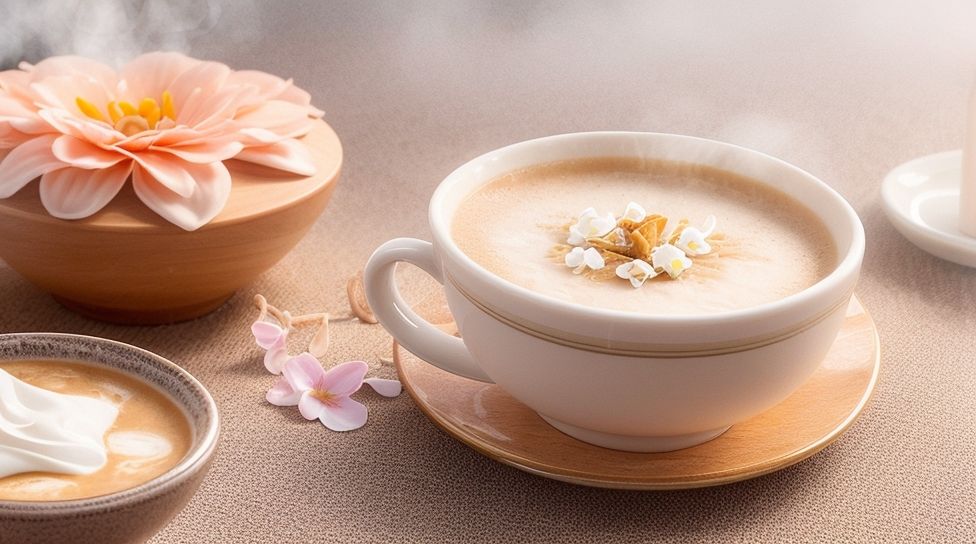
It’s an absolute pleasure to have you here to explore the delightful world of tea brewing! In this special piece, I’ll be sharing my personal and well-tested tricks on how to coax out the full potential of what a simple peppermint tea blend can offer. “Perfecting Your Brew: How to Make Peppermint Tea Taste Better” is all about helping you craft an unforgettable cup of that refreshing, minty magic. Get ready to transform every sip of your peppermint tea into a delightful experience, making it taste better than ever before!
Understanding The Flavor Profile of Peppermint Tea
Peppermint tea is one of the most loved herbal teas worldwide because it’s known for its refreshing and vibrant flavor. The flavor profile can be summed up in three distinct words: minty, refreshing, and slightly sweet.
Defining the taste of pure peppermint tea
Pure peppermint tea has a distinctly minty flavor that instantly imparts a cool sensation onto your palate. This sensation is followed by an inherent sweetness that sets it apart from other mint varieties. It’s a refreshing blend of potent and subtle flavors that leave you feeling refreshed and invigorated.
Unpacking the flavors: Minty, refreshing, and slightly sweet
As you drink peppermint tea, the first thing that you’ll notice is its intense minty flavor. This flavor is rather clean and crisp, sweeping across your taste buds leaving a paradoxically warming sensation. Following this ‘minty punch’, comes a refreshing aftertaste which is also slightly sweet, adding a welcome mellowness to the overall taste experience.
How quality of peppermint leaves impact the taste
The flavor of your peppermint tea is heavily dependent on the quality of the leaves used. High-quality leaves will yield a superior taste, bursting with full-bodied minty flavors, while lower quality leaves may result in a less vigorous taste profile.
Choosing The Right Peppermint Leaves
The first step towards making a flavorful cup of peppermint tea lies in choosing the right leaves.
Tips for selecting high-quality fresh peppermint leaves
When selecting fresh leaves, look for bright green, healthy leaves free of blemishes and discoloration. They should exude a vibrant, refreshing smell. Smaller leaves typically have a stronger aroma and taste than larger ones, which can become tough and less flavorful.
Understanding the benefits of using dried peppermint leaves
Dried peppermint leaves are a fantastic option for tea as they carry a concentrated flavor that comes out beautifully when steeped in hot water. They also offer the added benefit of being accessible year-round and having a longer shelf life.
Comparing store-bought vs home-grown peppermint leaves
Store-bought leaves provide convenience and consistency in flavor, while home-grown leaves allow you the freedom to control the quality and health of your plants, resulting in possibly a fresher and more robust flavor.
Proper Preparation of Peppermint Tea for Optimal Flavor
An often-overlooked aspect of preparing a delicious cup of peppermint tea is the brewing process itself.
How brewing time affects flavor
The brewing time is crucial in determining the flavor and strength of your tea. Over-brewing can lead to a rather bitter taste, while under-brewing may result in a weak, watery tea. A recommended brewing time is between 5-10 minutes.
Recommended water temperature for extracting peppermint flavors
The temperature of the water used to brew your tea also matters significantly. For peppermint tea, slightly cooler water (around 200° F) is generally recommended. This temperature allows the mint’s flavor to be fully extracted without running the risk of over-heating and potentially losing some of the more subtle flavors.
The role of right tea vessels in enhancing flavor
Finally, the type of vessel used to brew and serve your tea can make a difference as well. Ceramic is preferable due to its heat-retaining properties. The right tea vessel will allow all the flavors to develop before taking your first sip.
Combining Peppermint Tea with Other Herbs
One of the great things about peppermint tea is that it pairs wonderfully with other herbs.
Best herbs to pair with peppermint tea
Some of the best herbs to pair with peppermint tea include chamomile for relaxation, lemon balm for a citrusy burst, and lavender for a floral twist. These herbs not only balance the bold mint flavor but also add another flavor dimension to your tea.
How adding other herbs can affect the taste of the tea
Adding different herbs can greatly enhance the taste of your peppermint tea. For example, something like chamomile can add a floral undertone that subtly contrasts with the mint’s intensity, creating a more complex flavor profile.
Unique flavor combinations to try
For a unique flavor combination, try pairing peppermint with rosemary, which adds an earthy note to the bright mint. Or, blend peppermint with hibiscus for a tart, fruity and refreshing cup of tea. Experimenting with different combinations allows you to create a signature blend that suits your taste preference.
Sweetening Your Peppermint Tea Naturally
A touch of natural sweetness can take your peppermint tea to a new level of deliciousness.
Natural sweeteners to enhance your tea flavor
There are numerous natural sweeteners that you can incorporate into your tea, such as honey, stevia, or even ripe fruits like peaches and berries. These natural sweeteners complement the minty freshness of the peppermint – and they come without the health concerns associated with refined sugars.
Finding the perfect balance: Not too sweet, not too bland
Finding the perfect balance of sweetness in your peppermint tea is key to savoring its flavor. Remember, the goal of adding sweeteners should be to enhance the existing flavors of the tea, not to overpower them. Start with a small amount and gradually increase until you find your sweet spot.
Does the type of sweetener make a difference?
Yes, the type of sweetener can certainly influence the taste of your tea. For example, honey will give your tea a delicate sweetness coupled with a slight floral note. On the other hand, Stevia will enhance the tea’s sweetness without altering the tea’s taste too much.
Experimenting with Cold Brew Peppermint Tea
Cold brew peppermint tea is a refreshing twist on traditional hot tea.
How does cold brewing affect the tea flavor?
Cold brewing involves steeping the leaves in cold water for an extended period, resulting in a more subtle, smoother flavor. It tends to bring out the sweetness of the peppermint, without any of the potential bitterness that comes from over-steeping with hot water.
Steps to cold brew peppermint tea
To cold brew your peppermint tea, simply combine your tea leaves with cold water in a jar, cover it, and let it steep in your fridge for at least 12 hours. The longer it steeps, the stronger the flavor will be.
Comparing the taste of hot vs cold brew peppermint tea
The taste of cold-brewed peppermint tea, as compared to its hot counterpart, is often smoother and more refreshing. It retains all the minty goodness, but has a lighter, more delicate feel on your palate. It is perfect for hot summer days when a hot beverage may not be as appealing.
Usage of Dairy and Non-Dairy Creamers
Exploring the addition of creamers to your tea can open up a whole new spectrum of flavors.
Exploring how creamers enhance the tea’s flavor
Introducing dairy or non-dairy creamer to your peppermint tea can mellow the strong minty flavor and add a creamy thickness to your beverage, enhancing its overall flavor complexity.
Creamers to use for peppermint tea
You can try a range of creamers like traditional milk, almond milk, soy milk, oat milk, or even coconut milk. Each type of creamer will add a different twist, giving you the opportunity to play around and find your preferred combination.
Balancing creaminess and minty flavor: How to get it right
The goal when adding a creamer is to find a balance between the peppermint’s intense minty flavor and the creamer’s richness without subduing either one. Start off by adding a small amount, gradually increasing until you reach a point where the creaminess of the creamer and the intensity of the peppermint harmoniously meet.
Importance of Proper Storage of Peppermint Tea
Proper storage is key to preserving the vibrant flavor of peppermint tea.
How storage conditions affect the taste of your tea
Improper storage conditions like exposure to heat, light, and humidity can degrade the quality of your peppermint tea leaves, leading to a loss of flavor and aroma over time, and potentially results in a stale, bitter tea.
Tips for storing fresh and dried peppermint leaves for long-lasting flavor
Fresh peppermint leaves can be stored in a paper towel, inside a sealed bag in the refrigerator. Meanwhile, dried peppermint leaves should be kept in airtight, opaque containers, away from heat and light for retaining their flavor for a long time.
Avoiding common storage mistakes
One common storage mistake is to store your peppermint tea leaves near strong-smelling foods or herbs. This is because tea leaves can easily absorb odors, which can alter their original flavor. Another mistake to avoid is not properly sealing your tea storage container, which can allow air and humidity to degrade the leaves.
Health Benefits of Peppermint Tea
Beyond the flavors, peppermint tea is also revered for its numerous health benefits.
Does better taste mean more health benefits?
A better-tasting tea doesn’t necessarily equate to more health benefits. However, if enjoying the taste of your tea encourages you to drink it more often, then you have a greater chance of reaping its benefits.
Exploring the nutritional value of peppermint tea
Peppermint leaves are packed with a variety of essential nutrients, including vitamins A and C, iron and potassium. They’re also rich in antioxidants and have antimicrobial and antiviral properties that greatly contribute to overall health.
Understanding how different ingredients affect the tea’s health benefits
Adding other herbs or ingredients to your tea can bring added health benefits. For instance, adding honey to your peppermint tea not only enhances the flavor but also adds a dose of antioxidants, while lemon would add a shot of vitamin C.
Experimenting with Peppermint Tea Recipes
Endless variations of peppermint tea recipes can be created based on personal preference.
Unique peppermint tea recipes to try
Some unique peppermint tea recipes worth trying include peppermint lemon iced tea, for a refreshing summer drink; peppermint and chamomile tea, for a sleep-promoting bedtime brew; and peppermint chai, for a spicy and revitalizing blend.
How different ingredients can create different flavor profiles
Addition of different ingredients can significantly alter the flavor profile and also the color of your tea. For instance, hibiscus imparts a tart taste and a vibrant red color, while chamomile adds a floral undertone.
Finding your perfect peppermint tea blend based on your taste preference
The perfect tea blend differs from person to person, as it is largely based on individual taste preference. Experiment with various herbs, flavors, and sweeteners to find your perfect blend. After all, experimentation is the spice of life and definitely, the flavor of tea!
In conclusion, there’s much more to peppermint tea than meets the eye. Understanding and exploring its various facets – from leaf selection, preparation, flavor combinations, sweetening to even the storage – can truly elevate your tea-drinking experience. So go on, steep in the flavors of this minty elixir, and enjoy the resultant brew of health and flavor!
Hi, I’m Mat Boehmichen, the author behind The Tea Masters Hub. I’m passionate about all things tea and I want to share that passion with you. At The Tea Masters Hub, my mission is to provide you with all the knowledge and resources you need to truly understand and appreciate tea. Whether you’re a novice or a seasoned tea enthusiast, I’m here to guide you on your tea journey. From the art of preparation to the joy of sipping, I’ll teach you everything there is to know about tea. So join me on this flavorful adventure and let’s explore the world of tea together.










